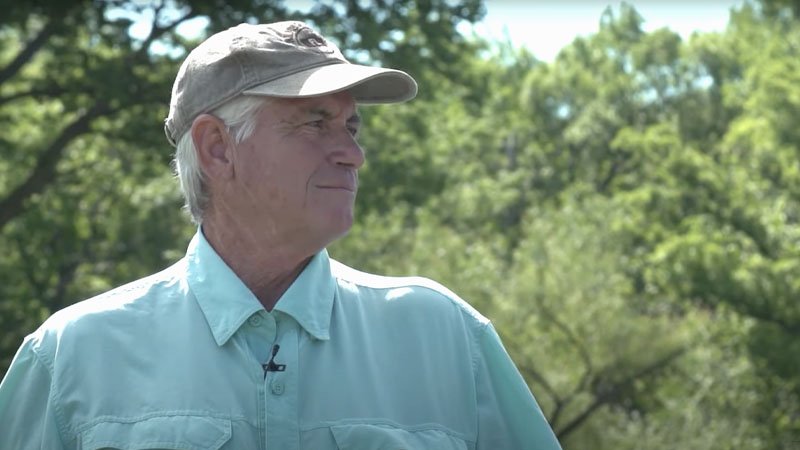The recent video and images on social media of hail-damaged Oakdale Golf Club. located 80 miles west of Minneapolis, will not long be forgotten.
The results were predictable when a relentless barrage of up to baseball-sized hail rained from the sky onto an already-wet golf course like some sort of artillery assault from a war movie. Images and videos showed a minefield of countless pock marks from tee to green.
Those images were met with thoughts and prayers, good luck wishes, comments of "better you than me" and even some advice for repair from those who say they have been through a similar situation in the past.
One such greenkeeper with a similar experience is former Merion director of course operations Matt Shaffer, who says a method he used to recover from such damage some 40 years ago would still work today.
"It's unbelievable those pictures," Shaffer said. "That's going to be tough."
Throughout his career as a superintendent, Shaffer developed a reputation for innovation. Often, innovation on Shaffer's part was born out of necessity, sometimes it was the result of a curious mind, or often it was both.
When the U.S. Open came to Merion in 2013, there were many doubters. The concern was that, at 6,700 yards, the par-70 East Course was too short for an Open. Several inches of rain in the weeks leading up to the tournament fueled skeptics and prognosticators predicting record-high Open scores.
What many did not know was that Shaffer had set booby-traps of sorts throughout the course.
"I got creative. I got really creative," Shaffer told TurfNet after the Open. "I spent months looking for the worst grasses to play out of, then I found those grasses and planted them in the landing zones and in the rough. I planted some of them together in different combinations in the same area, so if you landed in a 4-foot square four days in a row you could have four different lies."
The results astonished doomsayers and only reinforced Shaffer's reputation for outside-the-box solutions to many turf problems. Only 18 players broke par in an individual round throughout the tournament that Justin Rose eventually won with a very U.S. Open-like score of 1-over-par.
In those early days of his career, Shaffer learned a lesson in innovation while attending the Penn State Turf Conference when former Augusta superintendent and Better Billy Bunker founder Billy Fuller spoke on expediting recovery from aerification.

The practice Fuller was using to speed up recovery at Augusta, where he worked from 1981 to 1986, involved flooding the greens with water, covering them with tightly fitting plywood planks and running over them with a 1-ton roller.
"He's such a great speaker, and he is so smart," Shaffer said. "You have to keep the plywood tight so the turf doesn't squish up between the planks, and after you take them off, the turf was perfect. You have to let it dry, but the recovery was amazing. It was perfect."
... flooding the greens with water, covering them with tightly fitting plywood planks and running over them with a 1-ton roller.
Shaffer was the superintendent at Scotch Valley Country Club in rural central Pennsylvania from 1978 to 1986, and when the course was the target of a damaging hail storm, he figured if Fuller's flooding idea worked for the greens at Augusta, it would work on hail damage in central Pennsylvania.
He aerified with hollow tines, flooded the greens, covered them with plywood and rolled them with a borrowed 1-ton diesel packer.
The aerifier was set to kick and break up the soil, which was not normal practice at the time.
"Just aerifying was not good enough," Shaffer said. "We set the Coremaster to kick up the soil, which was actually the wrong setting then. Kicking up the turf tore the roots loose, but I figured I didn't have anything to lose, because the damage was so bad. Then we flooded the greens, and I mean we flooded them. Then we put down the plywood and rolled in two directions. You have to constantly hose down the plywood so the roller slides over it and doesn't grab and shoot the wood out the back.
"When we were finished, we let the greens dry for three days and they were perfect. I'd never seen anything like it."
Apparently, neither had golfers at Scotch Valley.
"Some of the members came to me and said 'Shaffer, that worked out so well we should do that more often,' " he said. "It was no fun doing the entire golf course with just eight guys."
The practice doubtlessly would have worked across the rest of Scotch Valley, but 200-plus acres is a lot of time for a team of eight and a lot of water. Not to mention who even has that much plywood?
Once, again, it was time for Shaffer to get innovative.
Poverty makes you innovative.
"We double-sliced (fairways) and cut them. As I remember, they played lift, clean and place," Shaffer said. "I didn't have much money back then, and so we spent what we had to on greens (and) did what we could on fairways, and tees didn't matter because you tee it up."
Fairway recovery did not end there.
"In the fall, we aerated the fairways, and seeded them with Colonial bents. Then a freeze-thaw over the winter and everything was good again.
"Poverty makes you innovative."


